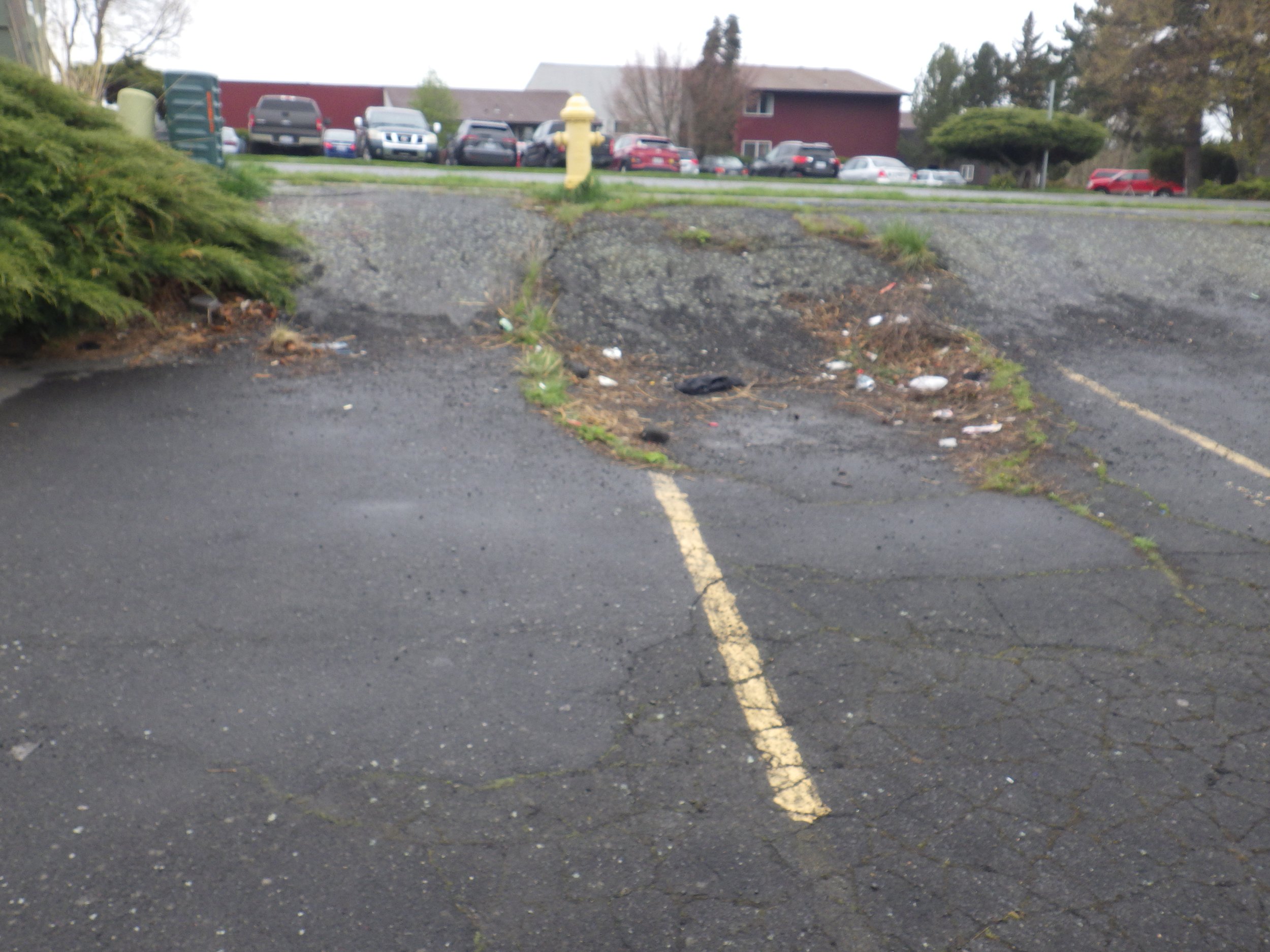
Is the Wall Moving - Or is the Floor?
Commercial inspections, known as property condition assessments or PCAs, are a totally different beast from a residential inspection. The standards are very different with commercial work much more focused on the document record and future expenses.
Some problems are common to both residential and commercial work. Foundation issues can obviously affect both and this commercial job was one of the more interesting that I have encountered.
Here, the owner who commissioned the PCA thought that he had a problem with the masonry walls of his building moving so, I naturally started there, examining the exterior foundation and wall assemblies.
Lo and behold, no major movement. There was minor cracking in the mortar joints of the masonry system but nothing that suggested a major failure.
Inside, I had considerable wall separation so I understand why the owner thought the walls were moving. However, I am simply not willing to take things on face value. I investigated further. As it turns out, the exterior walls were plumb. They weren’t moving. That being the case, I turned my attention to the floor. Now, I know, everyone expects the floor to be flat, almost by definition so that seems just silly. I checked anyway. I started tapping on the tile and found hollowness underneath. Time to break out the level again. The floor was not flat.
“Hmmmmm,” he thought.
So, what was going on?
If you look at the this picture, you'll see soil subsidence at the water meter and the fire hydrant. The obvious question to ask is "Do we have a major water problem at the curb?" Is there a leak on the water main? At the hydrant? Maybe the storm gutter for the street is failing?
Now, I'm guessing that you are already ahead of me here. Yes, the building is DOWNHILL from this apparent leak. My best guess was that the water flowed under the building causing a combination of erosion in some areas and soil expansion - clay soils can expand greatly when hydrated. That would explain the hollow areas AND the up-raised edges.
My recommendations? First, find and correct the source of that water. Second, they need an engineer to determine how badly the structure is damaged and how to repair it.
I'm glad the owners called me when they did - water problems such as this NEVER get better with time.
The High Cost of a Cheap Inspection
I have to admit that this year has been interesting - and FRUSTRATING.
This is a year that has included my usual residential work with some neat people. I’ve also worked with some folks that were less than neat and forced me to change procedures, including one gentleman who stood on a rickety second story deck railing to see what I was doing on the roof. I took a picture and sent it to his agent with the message, “THIS is way inspectors have anxiety attacks!”
I also had a client go through the dresser of the property owner. I was mortified.
Throw in a couple of other incidents, and I had to make a policy change. While in the past, I always wanted the client to attend the whole inspection, now I encourage clients to visit with me at the end of the inspection. This actually means the inspection process takes longer, but I simply will not have a client get injured on one of my projects, and I’m not going to violate a homeowner’s privacy. To compensate, I now put a lot of video into my reports.
I also am working as an expert witness in a case for a law firm in Spokane. I won’t go into particulars, but the process has been fascinating and will lead to changes in my reporting (even more thorough!) and policies.
I’ve had multiple clients set inspections and then cancel them after they were told that the listing agent would not allow me to inspect the property. In one case, the client was an attorney. From a real estate agent perspective, this was just dumb as it opens them up to a suit. As an inspector, it is frustrating - especially in the case of a home where I had previously called out structural concerns. As the”deal-killer” inspector, I’ve gotten used to being blacklisted but nothing says I have to like it.
But Wait . . . . There’s More! Let’s Talk Commercial Inspections
The most frustrating part of the year happened on the commercial real estate side.
Last year (2018) was a banner year for commercial inspections and I did some outstanding work identifying issues ranging from deteriorated foundations on a historical building to sagging walls in a warehouse building, to the extreme difficulty of upgrading a boiler system in a 1950’s building.
Good stuff, great catches, and I saved my clients a lot of money. This is not the way to endear oneself to the local agents. At the heart of the ASTM E2108 Property Condition Assessment (the recognized commercial inspection standard) is the Opinion of Probable Costs. When identifying deficiencies, I also generate an estimate of the repair costs. As you might imagine, this estimating requires considerable time and expertise. Contacts in the construction world help a lot, too.
One that didn’t get away . . . A landmark Pullman Building and Restaurant
This year, I missed on multiple projects. The reason?
I was too expensive. In almost every case where this happens, I am discussing fees and proposals with the agents and not the principals. Not an ideal arrangement.
One project that I missed out on was the McConnell Building in downtown Moscow. It is a historic building constructed in 1890. I will be the first to admit that I’m a sucker for old homes and buildings. I’m also leery of them and approach them looking for surprises. Sometimes it’s wiring issues, sometimes it’s foundation concerns - the list goes on and on. The inspector needs to be highly competent and vigilant.
In the case of the McConnell Building, it was the plumbing and I suspect that it was not discovered in the inspection process. After testing, the management company discovered that there was lead in the drinking water. This is a very big deal - and very expensive to fix. It is also exactly the type of issue that the inspector should be looking for when performing the walk-through survey.
This was not the only surprise. The new owner, Andrew Crapuchettes , with whom I have not talked, hinted at additional difficulties. Per this article in the Moscow-Pullman Daily News, there were several other “significant deferred maintenance issues” that he now has to deal with.
Yes, this chimney needs more than a little help.
One I’m not sure the current owner probably doesn’t know about yet is something I learned at the fire department while marketing my new chimney inspection service. Apparently, a neighboring business didn’t want to have the McConnell residents climbing on the roof of his business, so he nailed the windows shut from the outside. I have no idea if that condition still exists or if it is legal, but it just adds to my conviction that a proper commercial inspection includes all aspects of due diligence, including gathering the building permit records, health department records, and fire safety inspection reports.
As an inspector, that bugs me. My job - any inspector’s job - is to get that information and protect my client. The purpose of the Opinion of Probable Cost section is to address exactly this issue and is a critical feature of the due diligence process.
I’ll never stop saying it - you need the best inspector you can afford. The guys that work on the cheap will likely deliver a product that reflects their attitude toward their profession.
Washington State License #215
Former SBCC Member, Former Chairman State Home Inspector Advisory Licensing Board.




